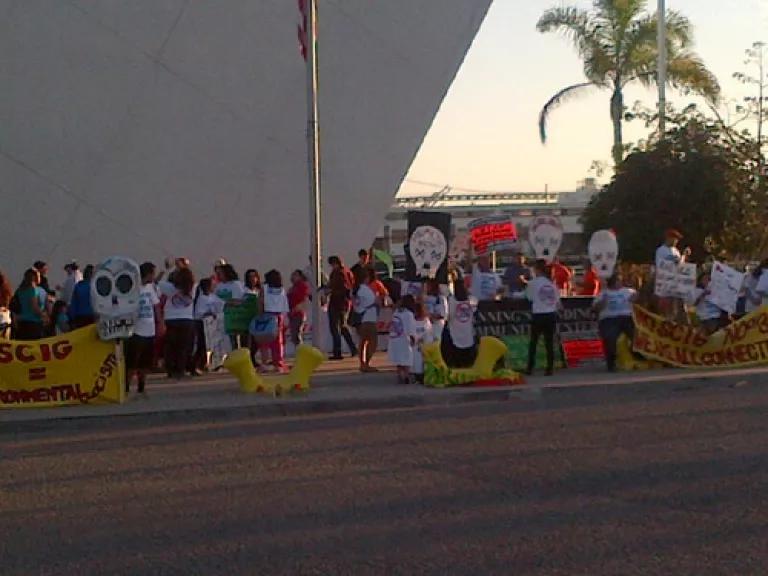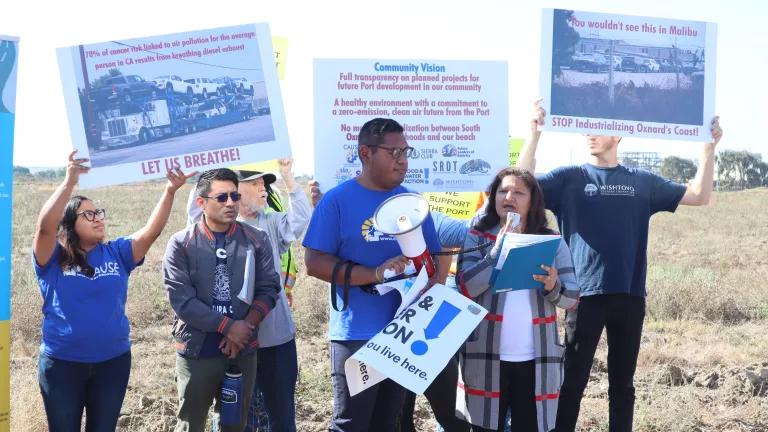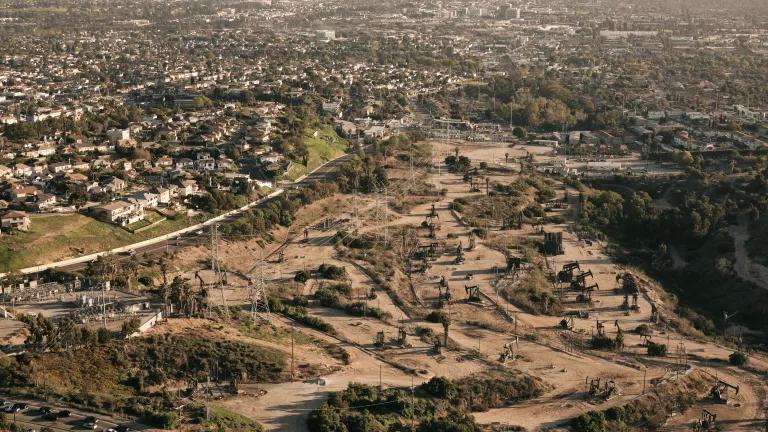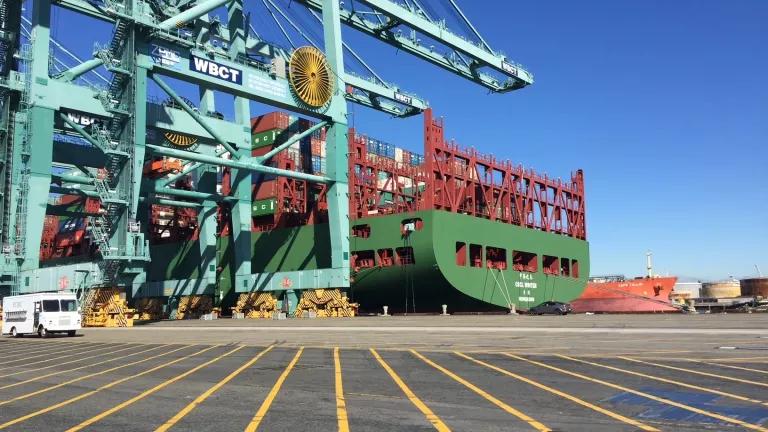
Clean air. Good jobs. I would bet that everyone living and working in the neighborhoods around the ports of Los Angeles and Long Beach wants both of these things. At least we can agree on that. The problem is that not everyone agrees on how we get there.
Last night there was a public meeting on the second version of the environmental analysis for a proposed new rail yard project. Hundreds of people came out to learn more about the proposed project and to express their perspective. Some expressed support for the project, claiming it will create jobs and reduce local air pollution. Others—including NRDC—expressed concerns that the project will significantly increase local air pollution and that there are major problems with the recently released environmental analysis.
The proposal is for the BNSF Railway Company to build a new rail yard called the Southern California International Gateway (the SCIG) on property owned by the Port of Los Angeles, a few miles from the ports of Los Angeles and Long Beach. Rail yards are a critical piece of the freight transportation industry. Containers of cargo from around the world—mostly Asia—arrives on huge cargo ships at the ports. Much of that cargo is then put on a truck and hauled to a rail yard. At the rail yard, the container is transferred on to a train, to carry it the rest of its journey to markets across the U.S. There are over twenty major rail yards across the state of California and they are all notorious polluters, emitting significant levels of air pollution and increasing the cancer risk for nearby residents. The trucks, trains, and equipment that move cargo around the yard together emit a lot of harmful diesel pollution, which is known to cause cancer and aggravate asthma.
The SCIG would be directly adjacent to an elementary school, a high school, a day care center, and a park, and extremely close to residential neighborhoods. It would also be directly adjacent to an existing rail yard (which is proposing to expand within the next year). This area already faces dangerous levels of air pollution from the diesel pollution and other emissions from the operation of the nearby ports, the existing rail yard, and the thousands of trucks that travel through the area every day hauling cargo to and from the ports.
The Port of Los Angeles released its environmental analysis of the project in 2011, but then withdrew parts of it after public outcry by numerous environmental and community organizations and LA’s air agency—the South Coast Air Quality Management District—that the analysis was inaccurate and misleading. The Port recently released a new analysis in September, called the “Recirculated Draft Environmental Impact Report.”
As someone said to me at the hearing last night, one side says the rail yard will reduce air pollution, the other side says it will increase air pollution—someone must be wrong.
While BNSF has committed to using some greener equipment, some cleaner trains, and other measures to reduce air pollution, the rail yard would still cause significant levels of air pollution. There would be approximately 5,500 truck trips going to and from the rail yard, every day. Even if the trucks and trains emit less pollution than older models, they together will still emit significant levels of air pollution.
BNSF and the Port claim that the project will reduce air pollution because most of the trucks that would normally haul the cargo to a rail yard about 20 miles inland (called the Hobart rail yard) would instead be able to travel just a few miles to the SCIG. This would result in less air pollution all along the route on the 710 freeway that goes to the Hobart yard.
The problem is that now all those trucks will be concentrated in a small area, close to several schools and neighborhoods. And the Hobart yard is not going to sit empty. There will still be thousands of trucks traveling along the 710 to Hobart—so residents living along the 710 route will not see a decrease in air pollution.
The recirculated environmental analysis even admits that the project would result in disproportionate effects, including significant impacts to air quality and noise, on the minority and low-income populations that live nearby. (Recirculated Draft Environmental Impact Report at page ES-29). And that construction and operations of the rail yard would result in air pollution that would violate air quality standards. (Recirculated Draft Environmental Impact Report at page ES-22).
The hundreds of local residents that came out to the hearing last night to voice opposition to the project do not want more pollution in their neighborhoods. There were parents and kids, young people and elders, carrying banners and chanting, and giving public testimony against the project. A few people made over a hundred homemade burritos to share with the crowd. I am immensely proud of these community members, who are working together to make their voices heard.

If you are concerned about the proposed rail yard and the air pollution it will bring to the local community, you can send a comment letter to the Port of Los Angeles at ceqacomments@portla.org by November 9.
NRDC will continue to stand with the community members fighting this project, making sure that the environmental review process complies with both the letter and spirit of the law.
Update: for more info, see the recent LA Times article further discussing these issues.



